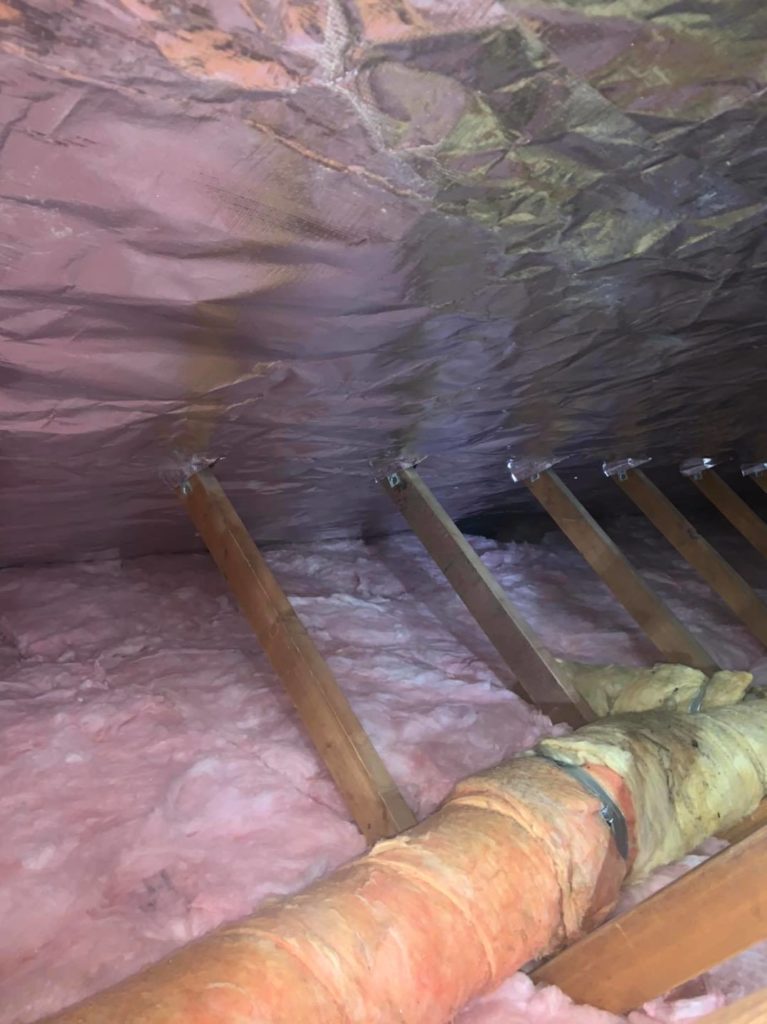Radiant Barrier
Radiant barriers are built in homes, typically in attics. They are installed to minimize summer heat absorption and cooling expenses. The barriers are made of a highly reflective material that reflects rather than absorbs radiant heat. They do not, however, inhibit heat conduction in the same way as thermal insulation materials do.
Continue reading to find out more about radiant barriers, and if it is the right choice for your home.
What is a Radiant Barrier?
Radiant barrier insulation is a form of insulation that is particularly meant for attics in warm to hot weather. The barrier is made from a highly reflecting material, usually aluminum foil.
Types of Radiant Barrier

Radiant barriers are made up of a highly reflective material, often aluminum foil. It is applied to one or both sides of a variety of substrate materials, including kraft paper, plastic films, cardboard, oriented strand board, and air infiltration barrier material.
Fiber-reinforced materials are used in several products to improve durability and ease of handling.
In reflective insulation systems, radiant barriers can be paired with a variety of insulating materials. Radiant barriers can serve as the thermal insulation facing material when paired with these insulating materials.
How Does a Radiant Barrier Work?
Radiant barriers directly reflect the sun’s heat, which is referred to as “radiant heat”. The efficiency of a radiant barrier is determined by two main values, and those are reflectivity (higher is better) and emissivity (lower is better).
The barrier’s reflectivity prevents the attic infrastructure from absorbing heat. Consider it like relocating your home from the direct sun to the shade. Preventing the joists and ductwork from being too hot.
The barrier’s emissivity also helps to keep the air in the attic from heating up. The hot air from the outside is unable to transfer heat to the colder air on the inside.
The reflecting surface must face an air space in order to be effective. The radiant barrier should be built in such a way that dust does not accumulate on the reflective surface. Dust buildup on the reflecting surface reduces its capacity to reflect light, thus losing its effectiveness.
When the sun heats a roof, it is largely the radiant energy of the sun that causes the roof to become hot. Much of this heat is transferred to the attic side of the roof by conduction through the roofing materials.
The heated roof material then transfers the heat energy it has collected onto the colder attic surfaces, like the air ducts and the attic floor. A radiant barrier decreases radiant heat transmission from the underside of the roof to the attic’s other surfaces.
When a radiant barrier is perpendicular to the radiant energy hitting it, it works best. Furthermore, the higher the temperature difference between the surfaces of the radiant barrier material, the more benefits a radiant barrier may provide.
American Attic: Attic Radiant Barrier Installation
The radiant barrier could be the ideal solution for keeping your home and wallet cool in the heat. Consider installing a radiant barrier in your house. Radiant barriers effectiveness depends on how you were able to properly install it, so it’s important to hire a professional.
Contact American Attic to know more about our installation services.
Our energy specialists at American Attic have years of experience working together with customers to come up with the most cost-efficient solution to saving energy.
Give us a call for a no-cost consultation to see if radiant barriers are a good fit for you and your home.

